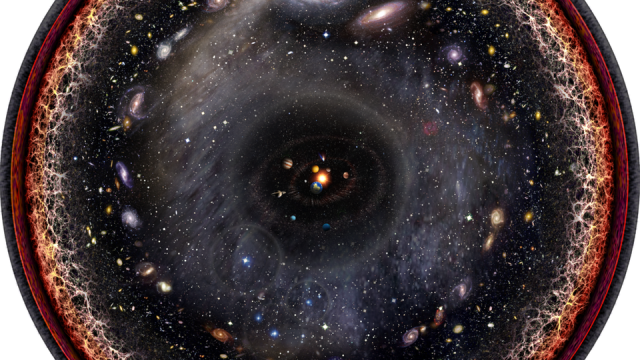How to have fearless conversations in dangerously divided times

- In her book, I Never Thought of It That Way: How to Have Fearlessly Curious Conversations in Dangerously Divided Times, journalist Mónica Guzmán explores how people can escape their echo chambers to have meaningful conversations with others whom they might not immediately agree with.
- This excerpt of the book overviews some ways to uncover what might be missing in your worldview.
- Guzmán proposes that asking, “What am I missing?” is the first step toward truly understanding different perspectives and having better conversations.
Excerpted from I Never Thought of It That Way: How to Have Fearlessly Curious Conversations in Dangerously Divided Times by Mónica Guzmán (BenBella Books, March 2022).
Curiosity
If there’s one question I want to persuade you to ask more often, it’s “What am I missing?”
“What am I missing?” is not just any question. It’s the question. It’s the doorstop to put down in the hallways of your mind, pathway after pathway, to keep open possibilities from slamming into harmful assumptions.
Answering it is not easy. For starters, we can’t look it up. There’s no textbook to consult to tell us just the things we don’t see. It’s not in our phones, and Google can’t run the search for us. There’s no algorithm, either, to make it all “frictionless.” When you’re going with the flow of a divided world, you can’t get a clear picture of what’s around you. What you do make out is too warped to trust, transformed by the echoes in our silos and the shared animosity we feel toward groups of people on the other side of countless issues—groups that merge into one big enemy we fight. Sorting, othering, and siloing narrow what we see while convincing us we see enough.
So…yeah. We’re missing a lot.
It’s not for lack of interest, though! And that’s where I see hope. I see it in the growing number of people who sense our shared blindness and are done accepting it, done waiting for this dangerously divided world to undivide itself. I see it in how we’re looking inward, to the patterns of our thinking and the rhythms of our relationships. And I see it—from sea to shining sea—in the quickening drumbeat of posts and op-eds from people who are waking up to their own place in this toxic equation and helping the rest of us find our power to change it. Or, at least, our resolve. “I’m as guilty as the next person, but I have vowed to open my mind, stop yelling at my television set, and start becoming a better listener,” wrote liberal David Weinstein in California’s Laguna Beach Independent. “These are challenging times, but that is when patriots show up to do the tough work to make our country stronger,” wrote conservative Lenny Mirra in the Valley Patriot in Massachusetts. “You have nothing to lose but your mistrust!”
To keep our minds open when so much pushes them closed we’re going to have to kick it old-school. We’re going to have to talk—really talk—with actual different people. This is the work. The resistance. This is how we push back against the patterns of SOS, inviting fresh insights to crack the walls of our silos and flood in.
It feels good to confirm our impressions, sharpen our wit, tighten our bonds. Specialize but not broaden. Not challenge. But it feels even better, I insist, to find but not be confined to our groups, to invite a truer world in—fear, discomfort, and dopamine lollipops be damned. And bonus: it really can be easier and even more fun than you think.
The work begins by following a signal. Something to watch for and track to make sure you’re hauling yourself out of your silo once in a while and taking a clarifying look around.
I found that signal when I caught my brain in the act. When I realized that seeing things from another point of view has an obvious name—and its own unmistakable feeling. In Part II, I’m going to tell you what this signal is, what it means, and why it matters. First, by getting real about how each of us sees the world. Then, by getting to know the drive to learn that’s been nicknamed our “knowledge emotion.” And finally, by breaking down the most powerful tool for understanding other people that any of us will ever have.
Let’s start with a big, beautiful mess: everyone else’s perspectives.
Perspective
How you see the world determines how you want to talk about it. One model that does a decent job of explaining this is known as Hallin’s Spheres. Picture two concentric circles in a big open space. The inner circle is the Sphere of Consensus. It has all the beliefs that a society, for the most part, agrees with. The earth is round, killing is bad, look both ways before crossing the street—that sort of thing. The outer circle is the Sphere of Legitimate Discourse. It has all the issues people would reasonably debate. Dogs versus cats, whether this candidate’s better than that candidate, ditching daylight saving time, you get the idea. And then there’s the big open space outside these circles. This is called the Sphere of Deviance. Out here is where you toss the belief that the earth is flat, that one race is better than another race, that you could soar into the air by jumping off your roof and flapping your arms just right, crap like that.
What happens as we get more politically divided? The Sphere of Consensus shrinks, I think, and the border between the Sphere of Legitimate Discourse and the Sphere of Deviance heaves, buckles, and breaks.
You know when people say we lack a shared reality? The fact that we can live in the same world, marked by the same set of events, and have such different views of what it all means is astounding, frustrating, and just real life. Which drives home a critical point: What happens in the world matters, but our interpretation of what happens in the world matters more.
That doesn’t mean we should pay any less attention to facts. It means we should pay more attention to perspectives.
Beyond Your Ken
People tend to think of “perspectives” as different views on the same thing. That’s always seemed a bit detached to me. People do the viewing, right? Unique people walking unique paths that led them to those views? We don’t see with our eyes, after all, but with our whole biographies. It’s time our sense of perspective took that into account.
The Scots have a word related to the bounds of our knowledge that I find super wise. It’s a “fossil word,” which means (fun fact!) that it’s essentially dead to language except for its use in one surviving phrase. The word is “ken,” and the phrase is “beyond one’s ken.” The whole concept was born on the high seas.
When Scottish sailors first talked about their “ken” in the 1500s, they were talking about how far they could see to the horizon out on the water. Then writers began to use “ken” to refer first to the range of your vision—at sea or not—and then, to the range of your knowledge or understanding. To what your mind can see, and not just your eyes. “One’s range of knowledge or sight,” goes the dictionary definition of ken. If something is “beyond my ken,” it’s beyond my understanding. I don’t see it, so I can’t know it. It’s beyond my horizon. It’s beyond me.
What I love about this word is that it draws our knowledge with obvious bounds and limits. It’s finite. Proximate. Something we can reach the end of. “Ken” reminds us of something important: you can’t know what you aren’t close to.
Look beyond your ken, and you won’t see anything clearly. Sometimes you won’t see certain things at all. I’ll never forget what happened to Seattle when I sailed into motherhood. Seemingly overnight, it transformed from a city of bars and restaurants to a city packed with parks and playgrounds I’d never seen before in my life.
Other times, you’ll see the barest hints of shapes out there beyond your ken. Shapes that’ll seem neutral, interesting, or threatening. When they seem neutral, you’ll shrug ’em off. When they seem interesting, you’ll look a couple times, and maybe move closer to get a better look. When those distant shapes seem threatening, though, you won’t want to move closer or move on. You’ll want to run away, fortify, or even attack.
It’s weird to do anything drastic when you can barely make out the thing that’s scaring you. So you’ll do something to resolve that: You’ll manufacture certainty. You’ll convince yourself that the shape you see beyond your ken fits the description of that sea monster everyone in your silo’s been buzzing about. And you’ll fight, flee, or rage accordingly.
When you fill in those gaps in your perception, you’re motivated by what scientists call NFC—your need for closure. And you want to reach what’s called “cognitive closure,” the “desire for a firm answer to a question and an aversion toward ambiguity.” You can’t see everything, so you’ll tell yourself you’ve seen enough.
What to do about this? It would make sense to shrug and say to yourself, Well, it’s not like I can step outside my own perspective. But you can.
Asking “What am I missing?” is the first step. It’s that doorstop against cognitive closure that comes too early, that hasn’t gotten close enough to know enough at all.




